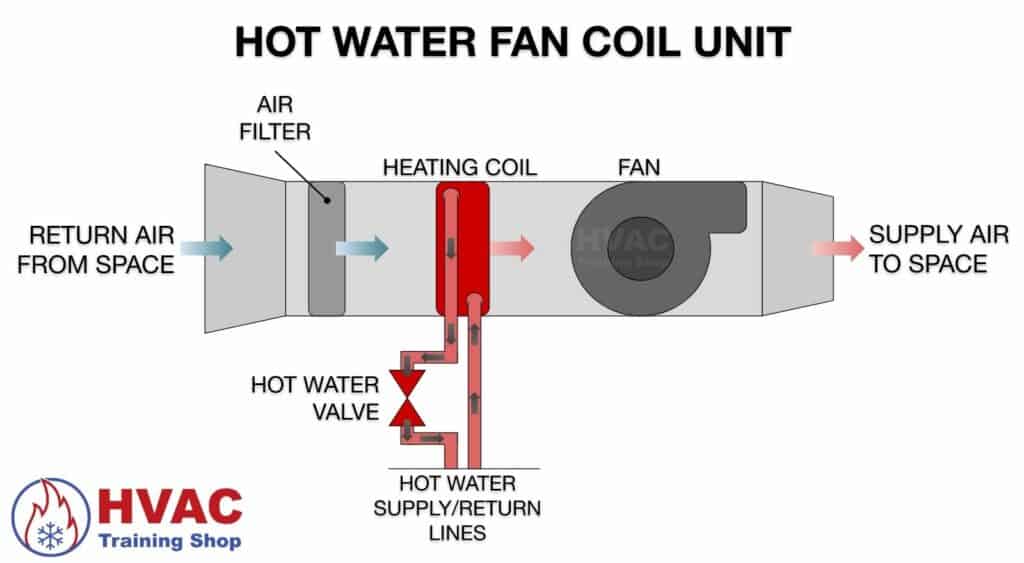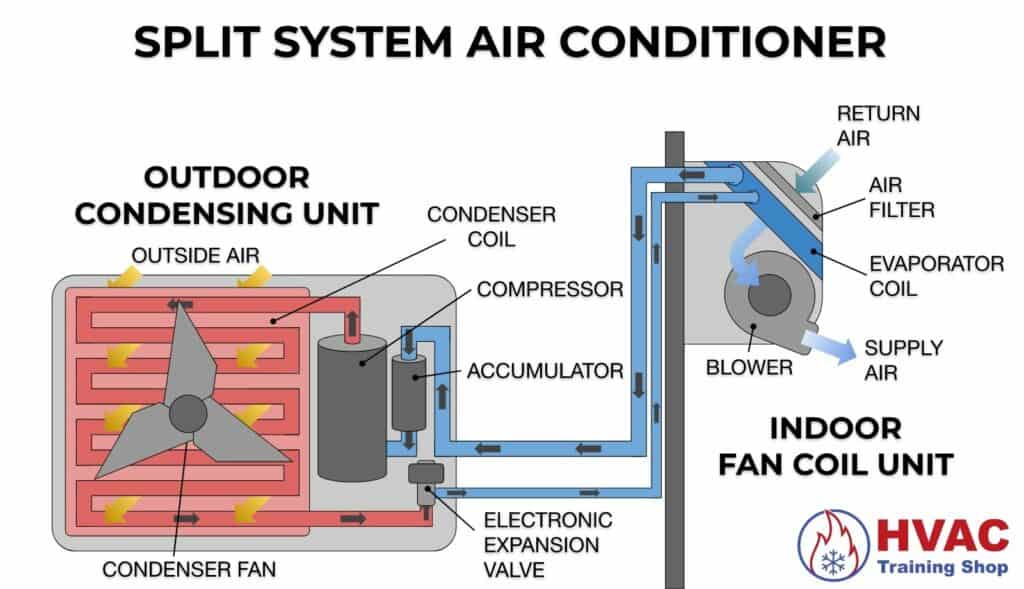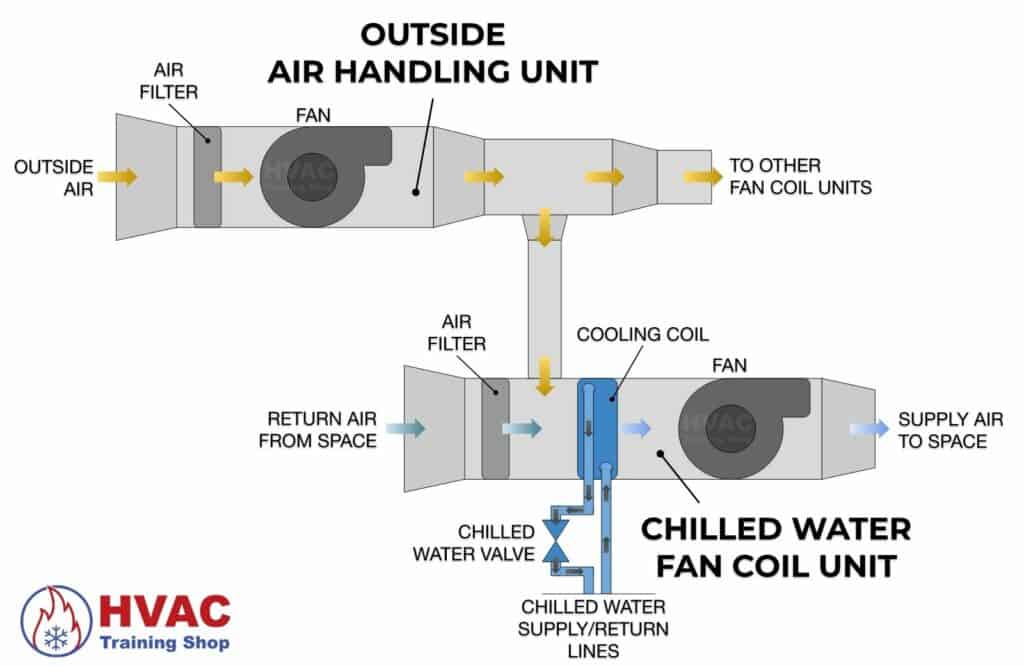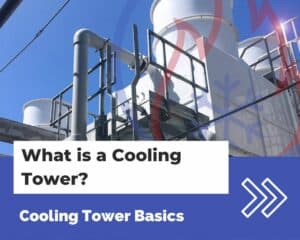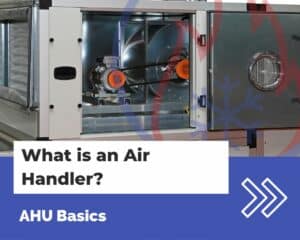If you’re familiar with air handling units (AHUs), you might wonder how fan coil units (FCUs) are different from them.
The main difference between an air handling unit and a fan coil unit is that an air handling unit is an assembly consisting of at least one fan, while a fan coil unit provides air circulation and heating and/or cooling.
However, the differences between air handling units and fan coil units are much more nuanced in practice – and there are basic uses for each unit that will make an engineer choose one versus the other.
In this article, I’ll go over the differences between air handling units and fan coil units. I’ll also provide some examples of air handling units and fan coil units, so you can get a feel for their differences in a real-world setting.
What ASHRAE says about air handling units and fan coil units
Some folks say that an air handling unit brings in fresh air from the outside, while a fan coil unit recirculates air.
While that’s a good rule of thumb, that’s not always the case – and certainly not the definition by ASHRAE – the global technical resource of the HVAC industry.
Here’s what ASHRAE’s Terminology glossary defines an air handling unit as:
“Assembly consisting of sections containing a fan or fans and other necessary equipment to perform one or more of the following functions: circulating, filtration, heating, cooling, heat recovery, humidifying, dehumidifying, and mixing of air. Is usually connected to an air-distribution system.”
ASHRAE Terminology for air-handling unit (AHU)
Here’s what ASHRAE’s Terminology glossary defines a fan coil unit as:
“Factory-made assembly that provides the functions of air circulation, cooling, heating, or cooling and heating.”
ASHRAE Terminology for fan coil unit
Additionally, ASHRAE’s Principles of Heating, Ventilating, and Air Conditioning states the following regarding fan coil units:
“Fan-coil units are for recirculation heating and cooling only.”
Sauer, H. J., Howell, R. H., & Coad, W. J. (2013). Principles of Heating, Ventilating, and Air Conditioning (7th ed., pp. 417). ASHRAE.
There’s quite a bit to unpack from these definitions so let’s get started.
What is an air handling unit?
An air handling unit is a general term for any device that circulates, filters, heats, cools, recovers heat, humidifies, dehumidifies, or mixes air.
According to ASHRAE’s definition, an air handling unit needs to contain “…a fan or fans and other necessary equipment to perform one or more of the following functions…”
So if the function of the air handling unit is only to circulate air, then all it needs to have is a fan – that’s it.
But if the function of the air handling unit is to cool/heat air, then it will also need a piece of equipment that can achieve this function – such as a cooling and/or heating coil.
Let’s move on to fan coil units next.
What is a fan coil unit?
A fan coil unit is a factory-made assembly that circulates air AND cools and/or heats the air.
So the most basic fan coil unit possible would consist of a fan and a heat-exchanging coil.
But doesn’t that sound like the air handling unit we just described above?
Yes, it does.
A fan coil unit is a type of air handling unit. But not all air handling units are fan coil units.
By definition, a fan coil unit only recirculates and heats and/or cools air.
If the unit does something else – such as bring outside air into a space, then the unit is technically not a fan coil unit.
However, if a fan coil unit is served outside air from a separate air handling unit, then it’s still considered a fan coil unit because the fan coil unit itself is not responsible for serving outside air – the air handling unit is.
A standard fan coil unit will consist of an air filter, a fan, and a heat-exchanging coil.
By definition, an air filter is not required for a unit to be a fan coil. But you’ll be hard-pressed to find a fan coil without an air filter.
Examples of air handling units
Now that we’ve gone over the rigid text-book definition of what an air handling unit is, let’s take a look at a few real-world examples of air handling units:
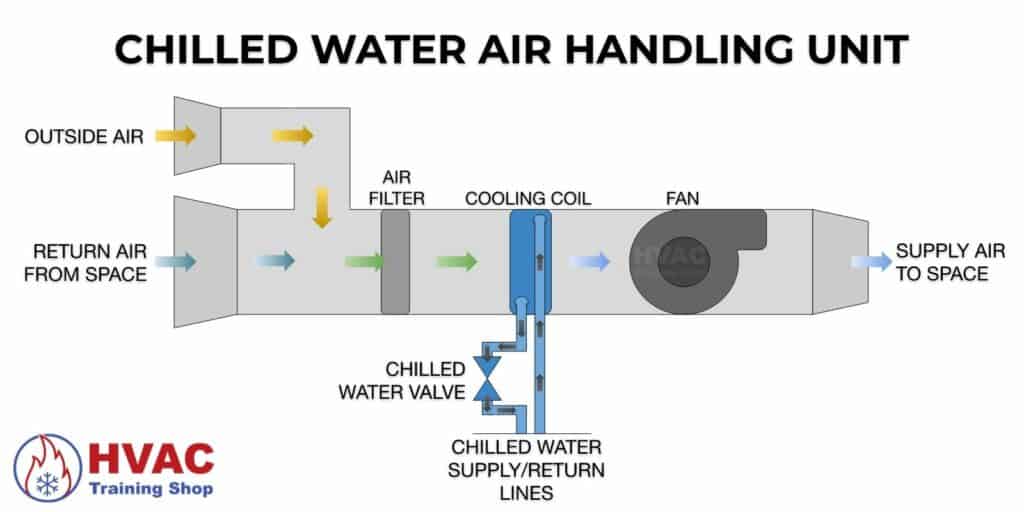
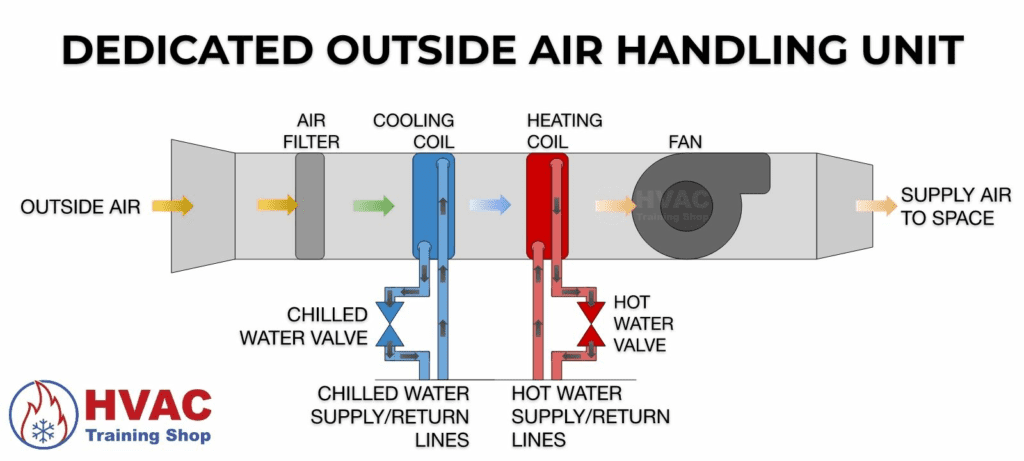
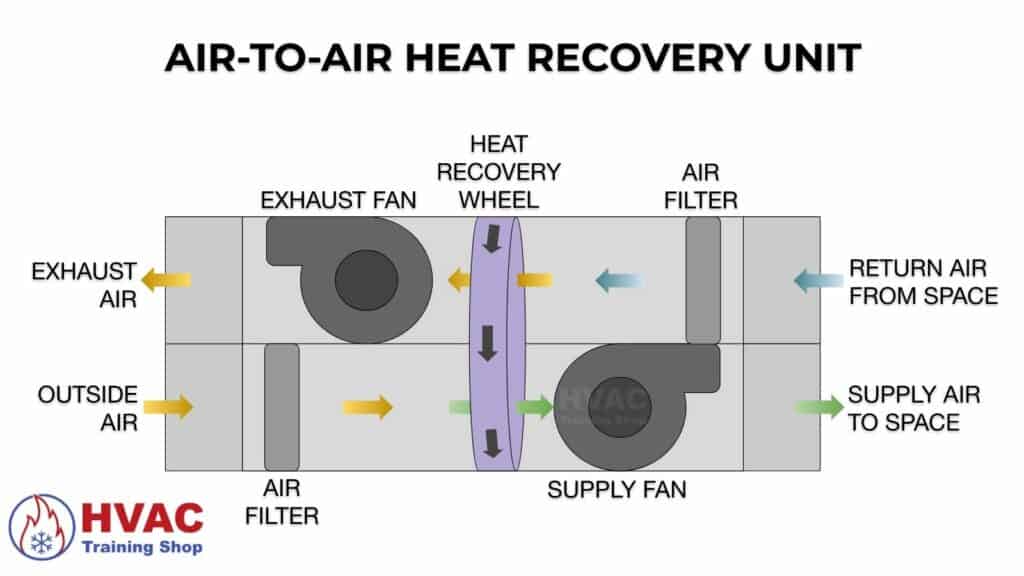
Examples of fan coil units
Here are a few real-world examples of fan coil units:
